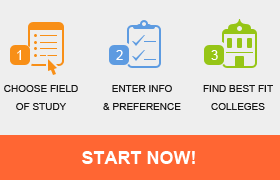Lake Superior State University
STUDENTS AND FACULTY
Enrollment: 2,753.
Student Body: 51% female, 49% male, 4% out-of-state, 11% international. Asian 1%, African American 1%, Caucasian 78%, Hispanic 1%, Native American 9%.
Retention and Graduation: 61% freshmen return for sophomore year. 18% freshmen graduate within 4 years.
Faculty: Student/faculty ratio 17:1. 112 full-time faculty, 65% hold PhDs, 5% are members of minority groups, 42% are women.
ACADEMICS
Degrees: Associate, bachelor’s, certificate, master’s.
Classes: Most classes have 20-29 students. Most lab/discussion sessions have 10-19 students.
Special Study Options: Cooperative education program, cross-registration, distance learning, double major, dual enrollment, honors program, independent study, internships, student-designed major, teacher certification program, weekend college. Special programs offered to physically disabled students include note-taking services, reader services, tape recorders, tutors.
FACILITIES
Housing: Coed dorms, men’s dorms, women’s dorms, fraternity/sorority housing, apartments for married students, apartments for single students. 90% of campus accessible to physically disabled.
Special Academic Facilities/Equipment: Natural science, Michigan history, and Great Lakes shipping museums, planetarium, industrial robots, atomic absorption/flame emission spectrophotometer.
Computers: Students can register for classes online.
CAMPUS LIFE
Environment: City.
Activities: Choral groups, concert band, dance, drama/ theater, jazz band, literary magazine, music ensembles, pep band, radio station, student government, student newspaper, symphony orchestra
Organizations: 60 registered organizations, 4 fraternities, 4 sororities.
Athletics (Intercollegiate): Men: Basketball, cross-country, ice hockey, tennis, track/field (outdoor), track/field (indoor). Women: Basketball, cross-country, softball, tennis, track/ field (outdoor), track/field (indoor), volleyball.
ADMISSIONS
Freshman Academic Profile: Average high school GPA 3.01. 9% in top 10% of high school class, 28% in top 25% of high school class, 60% in top 50% of high school class. ACT middle 50% range 18-23. Minimum paper TOEFL 550. Minimum computer TOEFL 213.
Basis for Candidate Selection: Very important factors considered include: Academic GPA, rigor of secondary school record, standardized test scores. Other factors considered include: Class rank, recommendation(s), geographical residence, interview.
Freshman Admission Requirements: High school diploma is required and GED is accepted. Academic units recommended: 4 English, 3 mathematics, 3 science, (3 science labs), 2 foreign language, 2 social studies, 1 history.
Freshman Admission Statistics: 1,566 applied, 85% admitted, 41% enrolled.
Transfer Admission Requirements: College transcript(s), minimum college GPA of 2.0 required. Lowest grade transferable C-.
General Admission Information: Application fee $20. Regular application deadline 8/15. Notification on a rolling basis, beginning on or about 9/15. Nonfall registration accepted. Admission may be deferred for a maximum of 1 Year. Credit offered for CEEB Advanced Placement tests.
COSTS AND FINANCIAL AID
Annual in-state tuition $5,988. Annual out-of-state tuition $11,976. Room and board $6,536. Required fees $318. Average book expense $750.
Required Forms and Deadlines: FAFSA. Priority financial aid filing date 2/21.
Notification of Awards: Applicants will be notified of awards on a rolling basis beginning 11/1.
Types of Aid: Need-based scholarships/grants: Federal Pell, SEOG, state scholarships/grants, private scholarships, the school’s own gift aid, Federal Nursing Scholarships, third party payments. Loans: Direct Subsidized Stafford, Direct Unsubsidized Stafford, Direct PLUS, Federal Perkins, Federal Nursing, state loans.
Student Employment: Highest amount earned per year from on-campus jobs $2,400. Off-campus job opportunities are good.
Financial Aid Statistics: 44% freshmen, 39% undergrads receive need-based scholarship or grant aid. 72% freshmen, 50% undergrads receive non-need-based scholarship or grant aid. 70% freshmen, 64% undergrads receive need-based self-help aid. 5% freshmen, 6% undergrads receive athletic scholarships. 83% undergrads receive any aid. 63% undergrads borrow to pay for school. Average cumulative indebtedness $17,458.

